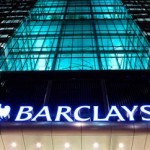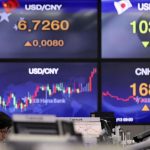How Six Brokers Walked Free After Unraveling of U.K. Libor Case

-
Witnesses fail to convince, jury acquits local defendants
-
Loss in complex case seen a major setback for regulators

Darrell Read, Colin Goodman, Daniel Wilkinson, Noel Cryan, Terry Farr and James Gilmour
The first signs of trouble for prosecutors came about three weeks into the trial. Their witness was a government investigator called to lay out details of the probe into the alleged rigging of a key interest rate by a group of brokers who faced up to 20 years in prison.
But as the investigator went through a calendar his agency had compiled listing days the rates had allegedly been manipulated, his team admitted they had some of the dates wrong. Waving the schedule as he spoke, defense lawyer Philip Hackett asked if the prosecution was “making this up as they go along.”
Sitting near the front of the courtroom, Mukul Chawla, the chief prosecutor from the Serious Fraud Office, silently shook his bewigged head. The case was supposed to have been another triumph for authorities seeking to punish those held responsible for abuses uncovered in the years since the 2008 global financial crisis. Instead, the jury acquitted the defendants after less than a day of deliberations.
“Apart from being acutely embarrassing to the SFO, these verdicts show how difficult it is to demonstrate criminal activity by individuals for this type of market misconduct,” said Alison McHaffie, a regulatory partner with law firm CMS. “It is always easier to bring regulatory action rather than criminal prosecution.”
A Slam-Dunk?
In the same courtroom only five months before, Chawla had won a landmark conviction in the case of Tom Hayes, the alleged mastermind of the rigging of the yen version of Libor, who was sentenced to 14 years in prison. Reduced on appeal to 11 years, it was still one of the harshest penalties for a white-collar defendant in the U.K.
The case against the brokers looked like a slam-dunk for Chawla. To begin with, Hayes had admitted conspiring with the six men to rig the rate to boost his trading profits. Reams of e-mail and instant-message evidence showed the defendants discussing the alleged crimes with Hayes. Two of the firms they worked for — ICAP and RP Martin — had already been fined $90 million by U.K. and U.S. regulators for failing to curb the brokers’ behavior.
This account of how the prosecution’s case unraveled is based on the proceedings, as well as interviews with many of the main participants, most of whom insisted on anonymity to discuss the trial. An SFO spokeswoman declined to comment.
Dressed in a black robe, his thick, silver hair freshly cut beneath his wig, Chawla appeared relaxed as he stopped to chat with the defense barristers around him before taking his position on a bench near the front of Courtroom Two on Oct. 6, the opening day of the trial.
Juror Asleep
Forget the jargon and esoteric nature of rigging something few outside the financial industry have ever heard of, he urged the jurors in his opening statement. Think of it as a simple case of cheating, he said, like fixing a horse race and betting on the outcome.
But before the first day was out, Chawla had used words like “derivatives,” “interest-rate swaps” and “ISDA definitions.” By day four, one of the jurors had fallen asleep. The testimony only got more complex from there.
In financial markets, brokers are like real estate agents, lining up buyers and sellers and pocketing a small commission on every trade. Lower-paid and often less well-educated than bankers, brokers inhabit a position in the finance hierarchy several steps below their clients. But while they don’t set Libor themselves, they can play a significant role in determining where it ends up through what they tell the rate-setters.
Hayes had been convicted of paying his brokers to skew the guidance on market interest rates they gave the bankers that set Libor each day. When that benchmark moved his way, he made millions on the bets he took in financial derivatives.
Chawla took the jurors through dozens of messages in which Hayes discussed with the defendants how he planned to move that day’s rates. Conversations of the men agreeing to lean on their clients were played through the court’s speakers. The brokers in the dock confessed to receiving more than 450,000 pounds ($654,000) in payments from Hayes for promising to assist in the alleged rigging.
But as Chawla laid out his case, even some of his own witnesses seemed to undermine it. In the second week, the prosecutor called John Ewan, a former director of the British Bankers’ Association, the trade body that officially oversaw Libor until 2013, in an effort to explain how the system was supposed to work when it wasn’t being rigged.
Instead of upstanding, Ewan came off as evasive. At one point, he claimed he had no idea the rate was being manipulated, despite written evidence that traders had told him.
’A Clairvoyant’
By his second day on the stand, Ewan took long pauses and looked into space before answering even basic factual questions. Defense barrister John Ryder evoked widespread laughter when he later described cross-examining Ewan as “like interviewing a clairvoyant.” The judge stifled a giggle.
Chawla had seen it coming — a few weeks earlier he had attempted to have Ewan removed from the witness list following his unconvincing appearance in the Hayes trial. The judge declined.
The following week, Chawla called Paul Chadwick, the SFO investigator. It should have been a routine discussion on how the evidence was compiled, but descended into an argument when it emerged that the SFO had changed the dates it claimed rigging took place. The initial version had some defendants accused of manipulation on days when they’d been on vacation. Hackett, a defense counsel, would later denounce the SFO’s handling of the probe as an “utter shambles.”
Even when the prosecutors had what they thought was compelling evidence, the defense was sometimes able to undermine it. Former Tullett Prebon broker Noel Cryan, for example, had exchanged dozens of instant messages with Hayes over a 10-month period in 2009 in which he pledged to help manipulate the rate.
Prosecutors argued the communications proved Cryan’s guilt. But he testified that it had all been a ruse. He’d never actually followed through on Hayes’s requests, he said, but only deceived him to allow his firm to pocket the more than 200,000 pounds commissions Hayes’s bank paid as rewards.
’It’s Called Broking’
When Chawla asked Cryan how he justified lying to one of his best and longest-standing customers, Cryan cracked a wide smile. “It’s called broking Mr. Chawla,” he said.
Members of the jury rolled their eyes when defense counsel revealed that the SFO didn’t have any proof that Cryan had actually passed on Hayes’s requests to Tullett Prebon’s cash brokers to carry them out.
“I would like to leave you with two words” that describe “the conduct of the Serious Fraud Office towards Mr. Cryan,” his barrister, Peter Finnigan, said during his closing arguments. “Unprincipled and cynical.”
Defense counsel portrayed the brokers as simple, family men at the lowest rungs of the financial-industry ladder who were being made scapegoats. They all lived in commuting distance of London and worked within a few miles of Southwark Crown Court, an austere brown brick cube on the south bank of the Thames. They gave each other nicknames like “Big nose” and “Lord Libor.” Several of them had left school at 16, making their way in unskilled jobs like construction before stumbling into the City of London.
In their telling, life as a broker was well paid but highly stressful and demoralizing.
The tension burst into the open one afternoon two-thirds of the way through the proceedings, when jurors returned from lunch to find an empty chair in the dock. Defendant Danny Wilkinson had been taken to the hospital and would be unable to attend the remainder of the trial, the judge said. Just a few days before, red-faced and sweating, the stocky Wilkinson had appeared desperate when he’d taken the stand.
Jurors Smile
The defendants had all paid a heavy price, their barristers pointed out to the jurors, several of whom had by now had taken to smiling sympathetically at the men in the dock as they left the courtroom each day. After 14 weeks arriving and leaving the courthouse at the same times, through the same gates and elevators, they had grown familiar.
After Chawla has summed up the prosecution’s case, taking more than two days, it was the turn of the defense counsels to make their closing arguments. Over the course of more than a week, they urged the jurors not to punish the men any more than they had been. One described the allegations as “a storm in a teacup.” After the trial, the SFO would question the decision to try so many defendants together.
When the judge summed up the case, he warned the jurors to put personal feelings aside.
After rendering their verdict, some jurors didn’t hide their emotions. On the steps outside the courthouse, one, wiping a tear from her eye, embraced the wife of one of the defendants, who leaned in and mouthed “thank you.”
Back in the courtroom, alone, Chawla slowly gathered his belongings from the desk where six months previously he’d had his greatest victory. “I’m just very tired,” he said and turned away.
Source: Bloomberg





























